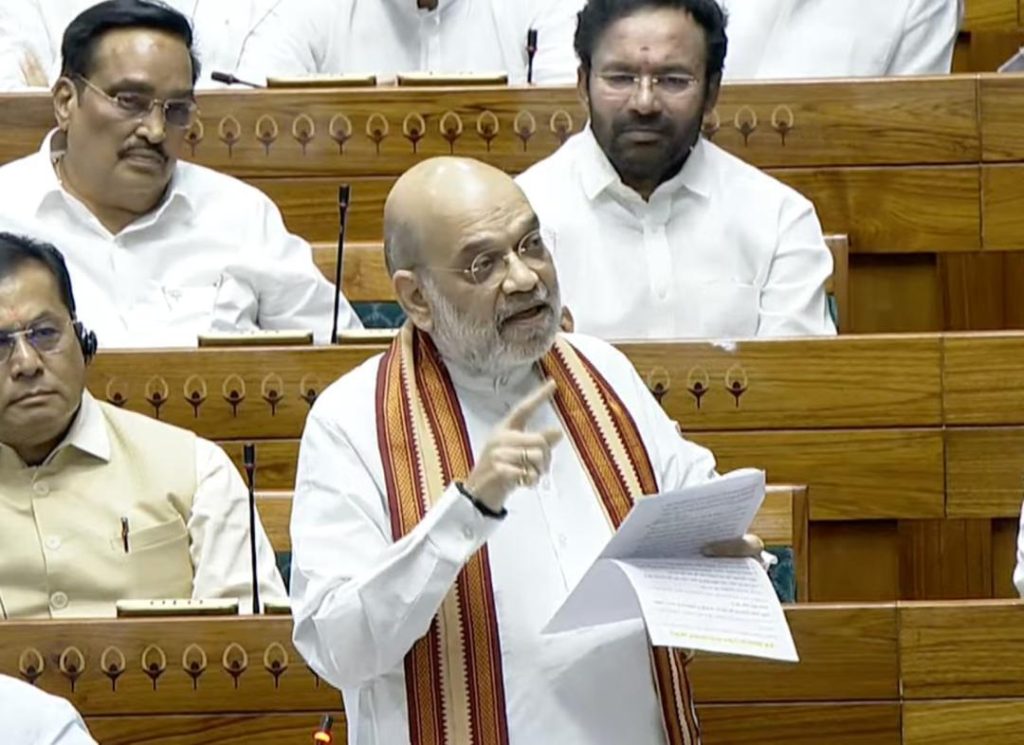
What did J&K Locals Arrested for Housing Pahalgam Terrorists Tell Government?
On April 12, a horrific terror attack took place in Pahalgam, Jammu and Kashmir, where a group of terrorists opened fire on a bus carrying Amarnath Yatra pilgrims, killing three people and injuring several others. The attack sent shockwaves across the country, with the government and security forces working tirelessly to track down the perpetrators. Recently, the Union Home Minister, Amit Shah, revealed some crucial details about the investigation, which has left many questions unanswered.
According to Shah, two Jammu and Kashmir locals were arrested for housing the terrorists who carried out the Pahalgam attack. During interrogation, these locals revealed some startling information that has raised concerns about the extent of terrorist infiltration in the region. In a statement to the Lok Sabha, Shah revealed that the terrorists had reached the hut of the two locals, located 2 kilometers from the Baisaran Valley, on April 21.
The details provided by Shah are chilling. The terrorists, he said, had AK-47 and M9 Carbine rifles, and two of them were wearing black outfits. They spent some time at the hut, consuming food and drinks, including tea, and took some essential items like salt, chillies, and masalas with them when they left.
This information has raised many questions about the security situation in Jammu and Kashmir. If the terrorists were able to reach a remote location like the Baisaran Valley, 2 kilometers from which the hut is located, it suggests that there may be gaps in the security apparatus that need to be plugged. Moreover, the fact that the terrorists were able to carry out their attack without being detected raises concerns about the effectiveness of the intelligence agencies.
The incident also highlights the need for better coordination between the security forces and the local population. It is crucial that the local population is aware of the security situation and is willing to cooperate with the authorities to prevent such attacks in the future.
The Pahalgam attack is not an isolated incident. In recent years, there have been several instances of terrorist attacks in Jammu and Kashmir, including the Pulwama attack that killed over 40 CRPF personnel in February 2019. The attacks have had a significant impact on the region’s economy and have led to a significant number of people leaving their homes to escape the violence.
The government’s response to the Pahalgam attack has been swift, with security forces launching a massive operation to track down the perpetrators. The National Investigation Agency (NIA) has also taken over the investigation, and several people have been arrested in connection with the attack.
However, the incident also raises questions about the government’s strategy to tackle terrorism in Jammu and Kashmir. While the security forces have been able to neutralize several terrorist outfits, including the Hizbul Mujahideen and the Lashkar-e-Taiba, the root causes of terrorism in the region remain unresolved.
Many experts believe that the government needs to address the political and economic grievances of the people of Jammu and Kashmir, rather than relying solely on military means to tackle terrorism. This includes implementing economic development projects, improving the infrastructure, and providing job opportunities to the youth.
In conclusion, the revelation by Union Home Minister Amit Shah about the Pahalgam attack highlights the complex nature of terrorism in Jammu and Kashmir. While the security forces have been able to neutralize several terrorist outfits, the root causes of terrorism remain unresolved. It is crucial that the government addresses the political and economic grievances of the people of Jammu and Kashmir, rather than relying solely on military means to tackle terrorism.
News Source:






